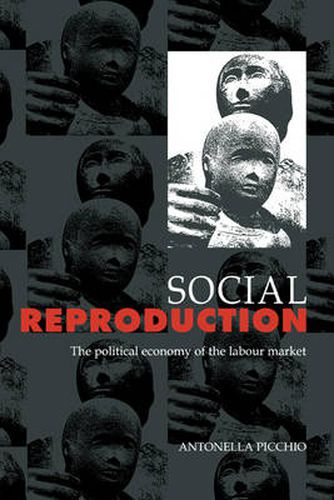Readings Newsletter
Become a Readings Member to make your shopping experience even easier.
Sign in or sign up for free!
You’re not far away from qualifying for FREE standard shipping within Australia
You’ve qualified for FREE standard shipping within Australia
The cart is loading…






This book focuses on the relationship between the process of production of commodities and the process of social reproduction of the labouring population, and seeks to restore that problematic relationship to the central place it had in the analysis of Smith, Ricardo, and Marx. The argument is directly opposed to that of the wages-fund theorists, who rejected the classical view of labour as a very special type of commodity whose price (the ‘natural wage’) was determined exogenously by material, historical and institutional factors. By substituting a strict supply-and-demand mechanism they and their followers effectively removed the whole question of social reproduction from economic theory. This rendered marginal or analytically invisible certain fundamental aspects of the system, most prominently the role of the state in the process of social reproduction and women’s work of reproduction. Examination of the 1909 Poor Law report and of the women’s labour market shows that what disappeared from theory remained crucial for economic policy. In this investigation the author draws on the history of economic thought, social history, and applied economics, using the surplus definition of profit (production minus subsistence of the labouring population). The resulting perspective, centred on the relation between production and social reproduction, opens new directions for economic analysis.
$9.00 standard shipping within Australia
FREE standard shipping within Australia for orders over $100.00
Express & International shipping calculated at checkout
This book focuses on the relationship between the process of production of commodities and the process of social reproduction of the labouring population, and seeks to restore that problematic relationship to the central place it had in the analysis of Smith, Ricardo, and Marx. The argument is directly opposed to that of the wages-fund theorists, who rejected the classical view of labour as a very special type of commodity whose price (the ‘natural wage’) was determined exogenously by material, historical and institutional factors. By substituting a strict supply-and-demand mechanism they and their followers effectively removed the whole question of social reproduction from economic theory. This rendered marginal or analytically invisible certain fundamental aspects of the system, most prominently the role of the state in the process of social reproduction and women’s work of reproduction. Examination of the 1909 Poor Law report and of the women’s labour market shows that what disappeared from theory remained crucial for economic policy. In this investigation the author draws on the history of economic thought, social history, and applied economics, using the surplus definition of profit (production minus subsistence of the labouring population). The resulting perspective, centred on the relation between production and social reproduction, opens new directions for economic analysis.